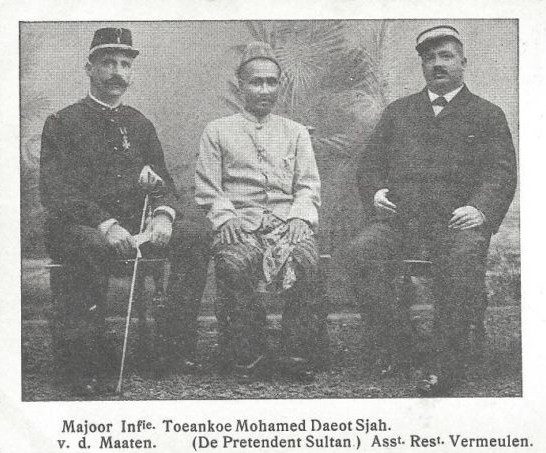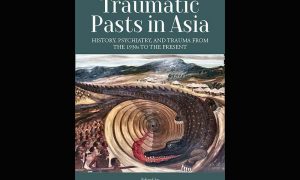Mobility, circulation, and cosmopolitan connection are increasingly important themes in Southeast Asian history and historiography.
Fuelled by strategic investments in studying inter-Asian connections and flows, these themes are now decentring colonial territories and postcolonial geo-bodies as the primary units of historical analysis and turning historians’ focus to routes, networks, and diasporas.
Not all Southeast Asian mobilities—or cosmopolitanisms, for that matter—were the product of voluntary actions, however, as other work on exiles, convicts, and indentured labourers has shown. Indeed, many were produced via coercion, including projects of state territorialisation which forced or encouraged displacement, as this special issue of Itinerario puts into focus.
Featuring work by five historians of Southeast Asia—Joshua Gedacht, Amrita Malhi, David Kloos, Francis R. Bradley, and Chiara Formichi—the special issue looks at relationships between forms of “coerced mobility” and the trajectories of political movements led by Muslims in Southeast Asia.
Spanning a time period from the late 1700s to the 1950s, it analyses how states have actively displaced select, targeted actors whose ongoing presence in the polity they deemed problematic as they sought to consolidate their power.
As the contributions collectively argue, echoes of these actors’ displacement can be traced in the politics of the movements these actors led or created, which were often cast as “fanatical,” “violent,” or “militant” by states seeking to displace them. As a result, the experience of, and responses to, displacement should be understood as key contributors to the trajectories of “Muslim” politics around the region, and, by extension, around the “Muslim world.” This displacement created new connections as much as it severed old ones, with effects that were sometimes direct and sometimes more diffuse.
Together, the articles cohere around questions such as how states have deployed coercive techniques of displacement, disconnection, and deterritorialization against populations to harness mobility for their own purposes, including to fashion new affective ties within new spatial orders. They also ask how coercive state activities conversely provided unintended opportunities for subjects to reconnect by forging counter-networks, beliefs, and selves across space.
The first of these articles, by Bradley, looks at Siam’s deliberate destruction of Patani, and the emergence of a geographically extensive diaspora in its aftermath. Piecing together scattered fragments of the historical record, Bradley examines how a series of Siamese invasions left Patani’s capital city devastated, with thousands of captives destined for slavery in Bangkok, and an additional wave of refugees forced to resettle in neighbouring Malay states or Mecca.
The second and third, by Gedacht and Kloos, examine the aftermath of the four-decade-long Aceh war, a protracted conflict that contributed to pervasive dislocation and the death of nearly fifteen percent of the local population. In particular, these two authors examine how colonizers sought to integrate the war-torn region into the Netherlands East Indies, paradoxically, through acts of disconnection. Gedacht shows that Dutch authorities physically expelled prominent Acehnese elites and rebels to Java not only as a means of punishment, but also as a means of redirecting Acehnese networks away from historical connections with Penang or Singapore toward the emergent, Java-centred geography of the Netherlands East Indies colonial polity. Kloos complements this emphasis on material dislocation with an examination of their epistemic counterparts. Noting that soldiers, scholars, and administrators persistently designated western stretches of Aceh as “the isolated coast,” Kloos argues, Dutch authorities could disconnect this area from its long history of Indian Ocean interactions. Through this production of a “geography of knowledge/isolation,” Dutch authorities thus sought to erase memory of mobile history and transform Aceh into a subordinate periphery.
The fourth, by Formichi, discusses widespread clashes between Dutch colonial troops and Indonesian revolutionary forces, which engendered successive remappings of Indies and Indonesian territory. Formichi examines how a notable Muslim leader from Java, S. M. Kartosuwiryo, fled Yogyakarta, the capital of the nascent Indonesian Republic, for West Java, an area still under the control of Dutch armed forces. By retreating to an area under colonial authority, paradoxically, Kartosuwiryo could escape from political rivals who espoused the importance of “freedom of religion.” Instead, he could promote a “divergent political path to independence,” this time focused on his “Islamist aspirations” for Indonesia.
The fifth article, by Malhi, looks at how Malayans, too, were not all on board with the path to independence laid out for them by British colonialists and Malay Muslim elites. Malhi discusses the displacement of the Tenth Regiment of the Malayan National Liberation Army—a group founded by Malay Muslim cadres in the Malayan Communist Party after the Emergency Declaration of 1948. In the early 1950s, the Regiment was driven northwards from its bases in safe areas around the Malayan hinterland across the border into Southern Thailand. With their physical displacement, their vision for a new, anti-colonial, and communist Islamism ended up permanently displaced from the arena of legitimate national politics, into the realm of nostalgia.
These articles and the focus on state efforts to coerce movement, alongside the resilience of Muslim agency, all speak to a wider question: did colonial undertakings really succeed at harnessing mobility and creating a totalising geographic framework of control? Taken together, this issue shows that colonial policies did not constitute the end of the story.
Muslim rebels and exiles galvanised countervailing networks and alternative centres that undermined imperial and post-colonial spatialities. Patani refugees forged a “spatial geography” of community, in Bradley’s words, that extended from Malaysia and Bangkok to Egypt to Mecca, while the Acehnese retained memories of connections through their poetic texts and efforts to revive the sultanate, as Kloos and Gedacht demonstrate.
Further, displaced Islamic rebels like Kartouswiryo and Abdullah CD did not merely reflect a Muslim “separatist” impulse, Formichi and Malhi show, but sought to establish alternative visions of postcolonial nationhood in Indonesia and Malaysia. Despite their expulsion from mainstream political life, their visions have pushed the Indonesian and Malayan/Malaysian states to burnish capitalist developmentalism as the “modern” path for postcolonial Muslims.
In sum, the articles in this special issue challenge the notion that world history can proceed simply by tracing the accelerating movement of peoples, commodities, and ideas across borders. By instead reframing ‘connection’ as a constant contest over disconnection and re-connection, it becomes possible to recapture a sense of how coercion, state-making, and space-making all factor into a world of simultaneously accelerating and decelerating mobility.
The cases here, drawn from a subset of colonial experiences involving Southeast Asian Muslims, cannot provide a comprehensive answer to the relationship between mobility and territoriality in the violent colonial and postcolonial ages. However, they do provide a flexible framework for moving beyond “connected histories” for their own sake, and for understanding how contestation over coerced mobility shaped ever-shifting geographic imaginaries, with important political consequences.
 Facebook
Facebook  Twitter
Twitter  Soundcloud
Soundcloud  Youtube
Youtube  Rss
Rss 


